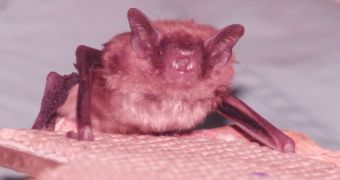For many years, biologists have been wondering as to what precisely allows bats to remain on course when they are pursuing a target. While doing to, the animals need to avoid other bats, obstacles, bids and so on. A new research indicates that the way their brains process sonar data is key.
Bats are known for using a natural form of sonar to get around. They emit ultrasound waves in their surroundings, and then listed for the echoes. These data enable them to construct a 3D representation of the environment they are navigating, inside their brains,.
A group of investigators at the Brown University recently discovered that the way in which bats' neurons fire in response to these echoes is what enables them to pursue their targets despite adversities.
The team discovered that a delay as short as 3 microseconds can inform the bat that the object it is following is not its target. Using this ability to sense minute discrepancies in the echoes it analyzes, the animal is capable of chasing its prey with remarkable precision.
According to researchers, the new data could be used to construct more advanced sonar devices for use in civilian and military applications. Submarines are a prime example of sonar-led vehicles that could benefit extensively from any new development in this field.
The study team published details of its investigation in the latest issue of the top journal Science. Experts from the Republic of Georgia were also a part of the research effort. Together, experts analyzed how bats distinguish changes in amplitude from the echoes they are hearing.
Amplitude is a measure referring to the intensity of a sound. Bats can detect changes as small as 1.5 decibels, and this is largely what allows it to classify an object either as a target or as background noise.
“Everything the bat sees using sonar is based on the timing of the neural responses and nothing else,” explains Brown professor of neuroscience and Science study author James Simmons.
“The problem the bat is facing is that it’s flying around in this really complicated environment. It’s getting all these echoes back [from the sonar broadcasts it emits], and the echoes are all arriving at almost the same time,” former Brown PhD student Mary Bates adds.
“And they have no trouble at all dealing with that. We're trying to figure out perceptually how these bats distinguish an echo from a nearby target from all the background echoes that are arriving within a similar time window,” says Bates, who is the lead author of the Science paper.
“What the bat does is it takes clutter and defocuses it, like a camera would, so the target remains highly defined and in focus,” Simmons concludes.
Funding for the new investigation came from the US Office of Naval Research, the National Institutes of Health (NIH), and the National Science Foundation (NSF).

 14 DAY TRIAL //
14 DAY TRIAL //